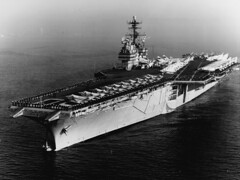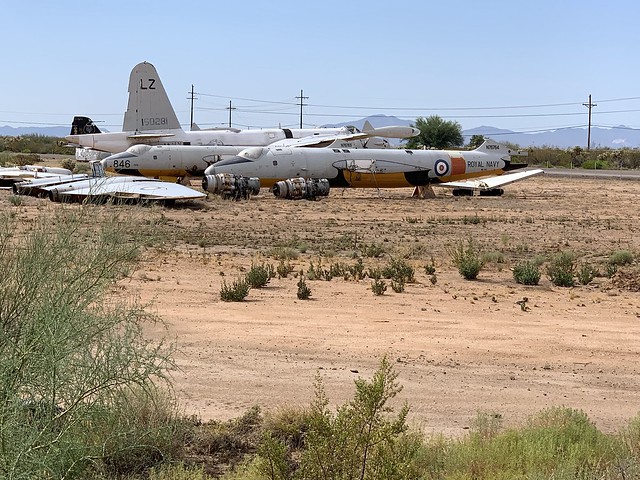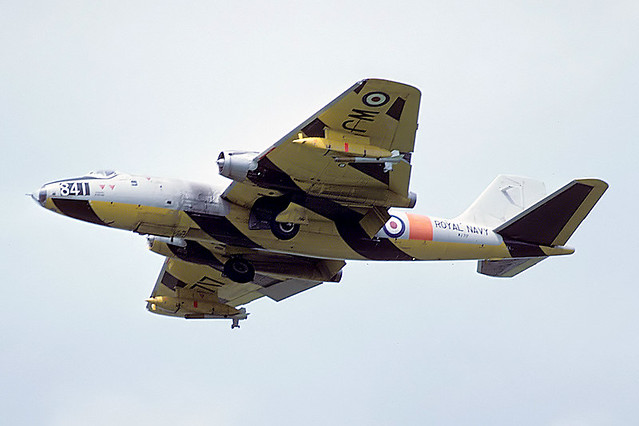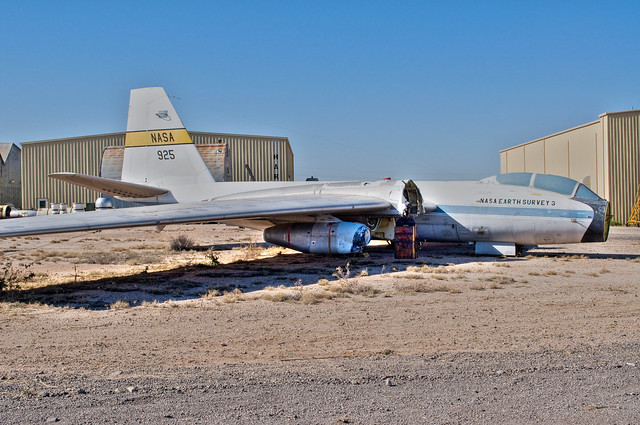
Yesterday, while helping Pima Air and Space Museum visitors board the tram for the first tour of the day, a woman asked if we had any aircraft that had flown off the USS Saratoga. PASM has a lot of naval aircraft, but only a few still wear the names of the carriers they were assigned to, and I couldn’t recall any with Saratoga markings.
Visitors stump me all the time, but I usually recover quickly by pulling out my smart phone and looking up information on PASM’s web site, or, in a pinch, Wikipedia. Not this time, though. After thinking about it for a minute, I decided to ask my friend John, the museum’s collection manager. I sent him a text: “John, visitor question: do we have any acft once assigned to the Saratoga? I don’t know, said I’d ask.”
Meanwhile, it was time for the tram tour to begin. I told the visitor I’d texted someone who might know and that with any luck I’d be there to meet her after the tour with an answer to her question.
John came through. Ten minutes after the tram pulled away, I received this text: “I would definitely have to look and see what I can find. I suspect one of our A-4s or our A-7 or something like that might have done a cruise.” A few minutes later, he texted again: “Our EA-1F Skyraider did a cruise on Saratoga in 1959 and another in 1962. Our Flight Systems Inc. A-4C did a Saratoga cruise in 1963 and one in 1965.”
I’m well acquainted with these aircraft. Both were built by Douglas Aircraft Company. The Skyraider, a large piston-engined prop fighter, is on our tram tour route and I tell visitors about it every Monday. The A-4C, a small jet strike fighter called the Skyhawk, is on display in front of the museum, and is the first aircraft visitors see when they turn onto the grounds. Here they are:


If you click on the small inset image of the USS Saratoga at the top of this post, you’ll see the original photo on Flickr. Zoom in and you’ll see several Skyhawks parked near the bow. Zoom in some more and you can make out at least one Skyraider near the stern.
As a quick aside, here’s why the museum’s Skyhawk wears civilian markings: after its military career, the jet was owned and flown by Flight Systems Incorporated, which had a contract to conduct weapons testing for the Navy.
So there I was an hour later, waiting at the boarding area for the tram to come in, brimming with excitement over having found an answer to our visitor’s question. I figured she probably had a father or grandfather who’d served on the Saratoga, and that she’d be thrilled to learn we had not just one but two aircraft that had flown off it. But the tram came back empty. Near the end of the tour we stop at the hangar housing the museum’s B-17 Flying Fortress, where visitors can get off if they want to go inside and see it. She had gotten off to see the B-17. Since I was the designated driver/narrator for the next tram tour, leaving in just a few minutes, I didn’t have time to run over to that hangar and find her, and as far as I know she went home without ever getting an answer to her question. You’ll probably think I’m the uber-geek of all time, but I felt bad about that for the rest of the day, and it’s still on my mind this morning.
As I remarked later on Facebook: “All this virtue, and no witnesses.” Thank you, dear reader, but being my witness. And thank you, John, for looking up that information for me.
While I’m on the subject of identifying aircraft and gathering information on them, take a look at these two English Electric Canberra basket cases in PASM’s restoration yard:

I first noticed the Canberras several months ago and have had them in the back of my mind ever since. Why? The English Electric Canberra was a Royal Air Force jet, a land-based medium bomber, and I’d never heard of any flying for the Royal Navy.
Turns out a couple of dozen did, former RAF assets reassigned to the Fleet Requirements and Air Direction Unit (FRADU), which conducted simulated ship attacks and acted as airborne early warning targets for the Royal Navy, operating out of land airfields in the UK. They flew for FRADU in the 1970s and 80s, and I believe our two aircraft were some of the last in Royal Navy service. Here’s a photo of one in flight, so you can see what they looked like when fully assembled:

As a kid, growing up on US Air Force bases in the States and Germany, I’d see Canberras all the time. We flew them too: the USAF called them B-57 Canberras, and operated them from the mid-1950s into the early 1980s (they were one of only two foreign-designed aircraft types adopted for use by the US military—the other is the Harrier). The American Canberras were built under license by the Glenn L. Martin Company, and had a different cockpit arrangement from the British version: ours had tandem (fore and aft) seating; theirs had dual (side by side) seating. Here’s one of the US-built B-57s, this one on display at the USAF Museum at Wright-Patterson AFB in Dayton, Ohio:

There’s a third Canberra in PASM’s restoration yard, a Martin-built “big wing” high altitude and weather research variant called the WB-57F, once operated by NASA. It’s been out back as long as I’ve been at the museum, nine years now, and I have no idea when they’ll get around to restoring it for display. I don’t have a good photo of my own, so I’ll share someone else’s, found on Flickr:

I don’t post PASM updates on a regular schedule, but there are many many more interesting projects awaiting restoration and display, and you can expect more posts like this soon. Thanks for reading!